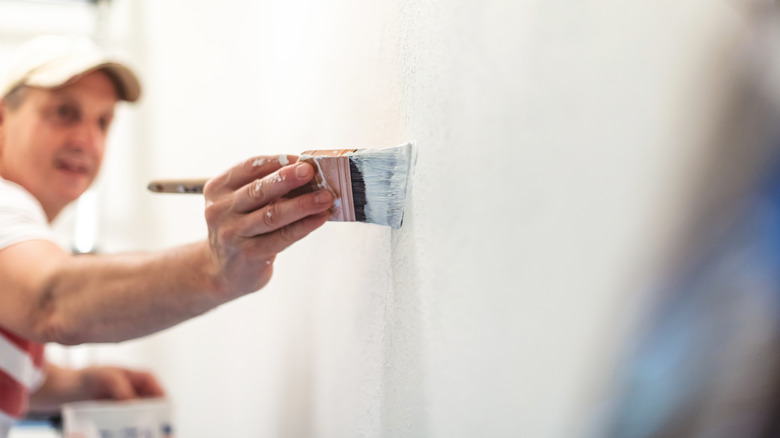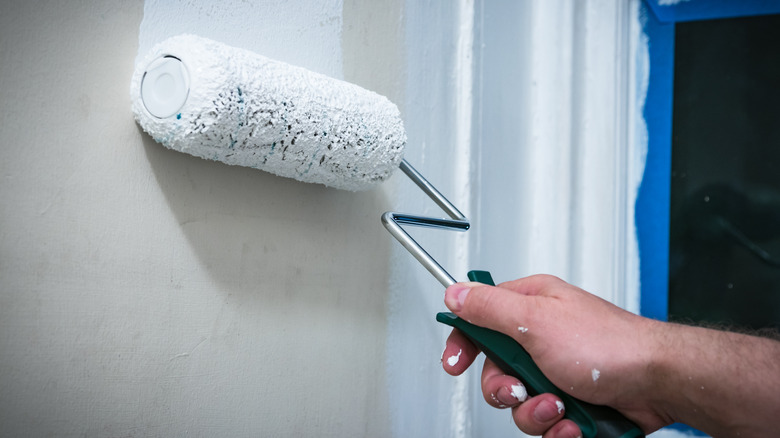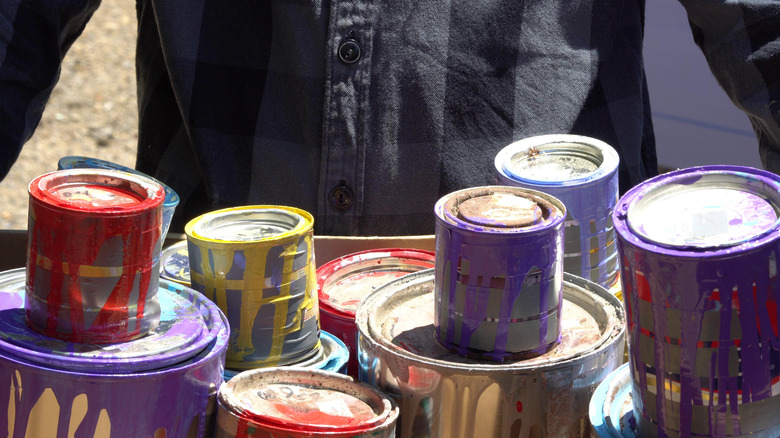What To Consider Before Painting Over Oil-Based Paint
When you're starting a new paint job at your home, you should pay attention to what's on the surface before you add the new layer. If you have an older home, it's possible that you have oil-based paint on the walls, as it was the only option before the 1940s. Luckily, placing a new layer over the oil base layer shouldn't cause significant problems — as long as you take steps to prepare for the job ahead of time. You'll need to start by ensuring the old layer is completely dry, which shouldn't be a problem in an older house, as oil-based paints typically require about seven days to cure and harden. You almost certainly will need to prep the surface through sanding and cleaning to make sure the new layer of latex will adhere completely to the existing oil-based layer, preventing peeling and flaking in the near future. Finally, you should add a bonding primer layer made for this particular situation over the top of the existing oil-based paint, again helping the adhesion of the new latex application.
Before starting the new job, it's important to be certain that the oil base layer is fully cured. This means that the original layer is completely hardened. Once it's cured, you can add any type of new paint over the top with less concern. If you're adding layers over the top of a recent job that involved painting with oil-based materials, though, you may need to wait to make sure everything cures completely.
Getting started
Begin by sanding the existing wall that has oil-based paint. This surface will have a glossy appearance, and latex does not adhere well to the glossy surface, leading to peeling. You don't need to fully remove the existing oil-based paint with the sandpaper. Instead, use sandpaper with a grit of around 200, which is a finer type that primarily scratches up the glossy material and gives the new paint a greater ability to adhere. Wipe down the area to remove any sawdust or other particles. Then add a primer layer over the existing surface. It's important to use a bonding primer over the oil-based paint, which gives the latex the best chance of adhering to the primer properly. It's okay to use a latex-based bonding primer, as long you ensure it's made for bonding.
Afterward, give the latex time to fully cure to ensure the most long-lasting result. Avoid bumping into the surface or scratching it until it cures. Remember: How long it takes paint to dry and how long it takes to cure are two different things. Latex takes one to three hours to dry and up to 30 days to cure.
Using oil-based paint versus water-based latex
It's far more common for people to use latex- than oil-based paint these days. However, oil was the more popular choice through the 1960s, as it offered the advantage of a more thorough coverage in fewer coats. It remained durable for a long time after application, too. However, it's unlikely that the pros of today will make use of oil-based paint inside the home, as they have a number of reasons for preferring latex in the oil paint vs. latex debate.
For starters, oil-based paints emit volatile organic compounds (VOCs) during application that can be dangerous for people to breathe. Some of the ways that VOCs affect the human body include headaches, eye irritation, nose and throat irritation, nausea, and dizziness. These problems can enhance problems for those who have asthma. Additionally, some people have a significant sensitivity to VOCs that results in rashes or hives if they come into contact with the skin.
Beyond health problems, pros tend to avoid using oil-based paint for large jobs inside the home, as they require special cleanup techniques using solvents. Such solvents are extremely toxic, making it challenging to use and dispose of them properly. With latex, cleanup can occur using water, making it a far safer and easier process. Modern latex formulas also last a long time, giving homeowners good value, and they don't tend to generate a yellow tint with constant sunlight. Finally, latex is not combustible, which is a problem for oil-based paint.


